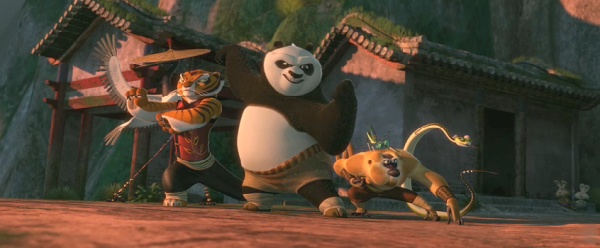2011 // USA // Matthew Vaughn // June 8, 2011 // Theatrical Print (St. Louis Cinemas Moolah Theater)
Now that a fifth (Really? Fifth?!) X-Men film is upon us, most fans of the long-running, perpetually evolving, multi-titled comic series have likely accepted that the appearance of their favorite mutant in the films amounts to little more than a shout-out intended to elicit squeals of delight. The characters and stories from the source material have now been so thoroughly scrambled in the films that the franchise can barely be regarded as an adaptation at all. (Not that fidelity to the comics is that salient when said comics are laden with reboots, relaunches, reimaginings, and parallel universes.) What's left is that tonal and thematic core that's often called "the spirit" of the comics, and although the quality of the X-Men films has swung about fairly wildly, they have at least been consistent in their evocation of that spirit.
Accordingly, I'm not especially interested in parsing exactly what X-Men: First Class gets "right" or "wrong," vis-à-vis the comic series. Nitpickers will doubtlessly hash it out ad nauseam somewhere on this Internet thing, as comic fanatics are wont to do. As a film, The First Class is a perfectly serviceable little actioner, one that pivots on its most simple, superficial components. These include the slick retro design by Chris Seagers, a criminally rousing score by Henry Jackman, and the charisma of a few lynchpin actors: Michael Fassbender, Rose Byrne, Jennifer Lawrence, January Jones, and an unexpected Kevin Bacon. Their agreeable presence is key, since the performances are nothing to write home about--even, lamentably, Fassbender's--hobbled as they are by the expected silliness of the dialog. Certainly, none of the principals have mastered the gratifying blend of credibility and camp that Ian McKellan and Hugh Jackman brought to earlier entries, a balancing act that allowed them to rattle off the goofiest lines with aplomb and still menace the ever loving hell out of a room.
This prequel of sorts to the filmic X-Men saga tells the secret history of a Cuban Missile Crisis packed with mutant meddlers, most prominently Sebastian Shaw (Bacon). Shaw is a cocky mastermind with the tastes of a Bond villain, who thinks World War III will make for an atom-smashing good time. Luckily for both the U.S.A. and the Evil Empire, Charles Xavier (James McAvoy) and Erik Lehnsherr (Fassbender) are on hand to stop him with a nascent team of young mutant heroes. Helming this chapter in the franchise is Matthew Vaughn, who last year delivered the incongruous and strangely overrated Kick-Ass. Vaughn at least conveys that X-Men spirit capably, and maintains a vigorous sense of momentum (often to the detriment of narrative clarity) that has thus far been lacking in the series. Unfortunately, four writing credits (including Vaughn) and two story credits (including original X-Men director Bryan Singer) is practically a recipe for committee-born tone-deafness. Hence the film's creaky aura of determinism; its typically overstuffed roster of ancillary, paper-thin characters; its suspect, should-goddamn-well-know-better treatment of minorities; and its sporadic corniness. (I counted two ironic gags about Professor X's future baldness. One is too many!)
Still, one five-second cameo and one F-bomb made the price of admission worthwhile.









